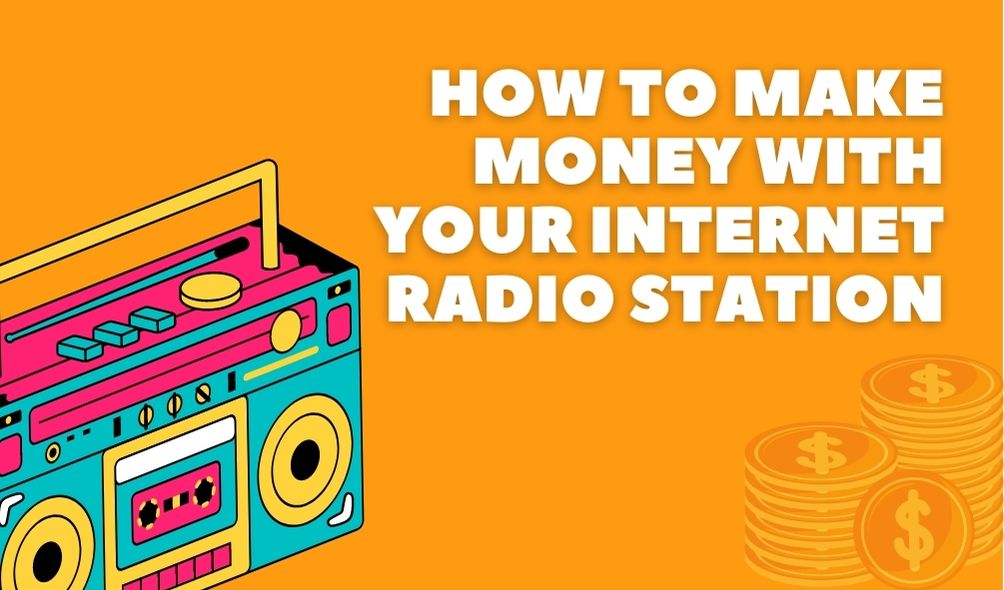Radio stations make money primarily through advertising and sponsorships. They sell airtime to advertisers to reach their audience and generate revenue.
Radio stations have multiple revenue streams to ensure profitability. In addition to advertising, they also earn from sponsored content, events, and caller charges. By leveraging these various avenues, radio stations can maximize their income and sustain their operations successfully. This diverse approach to generating revenue allows radio stations to thrive in a competitive media landscape while providing valuable content to their listeners.
Introduction To Radio Station Revenue
Radio stations make money through various channels such as advertising, sponsored content, events, and charging callers. Advertisers pay to reach the listening audience, while events and sponsored content also contribute to revenue. Additionally, stations may charge callers for contests or other interactions to generate income.
Key Revenue Streams
Radio stations generate revenue through various streams, including advertising, sponsorships, donations, and events. These revenue streams play a crucial role in the financial sustainability of radio stations.
The Role Of Audience Size
The size of the audience directly impacts a radio station’s revenue potential. A larger audience attracts more advertisers and sponsors, leading to increased revenue opportunities. Therefore, audience size is a significant factor in determining a radio station’s financial success.

Credit: www.exaget.com
Advertising: The Primary Engine
Radio stations primarily generate revenue through advertising. They sell airtime to advertisers looking to reach their listening audience, similar to social media and TV platforms. Additionally, radio stations make money through sponsored content, events, and sometimes by charging callers for participation.
When it comes to making money, advertising is the primary engine for radio stations. Radio stations rely on advertisers to promote their products or services to their listeners, who are the product being sold to advertisers. This is how radio stations generate their revenue. In addition to advertising, radio stations also make money through sponsored content, events, and charging callers.Types Of Ad Formats
Radio stations offer various types of ad formats to their advertisers. Here are a few of the most common ad formats used by radio stations:- Pre-recorded commercials
- Live reads by on-air personalities
- Sponsorship of segments or shows
- Product giveaways or contests
Strategies For Maximizing Ad Revenue
Radio stations can maximize their ad revenue by implementing the following strategies:- Attracting a large and engaged audience through compelling content
- Offering targeted advertising to specific demographics
- Providing a variety of ad formats to suit different advertiser needs
- Creating packages that bundle different ad formats and promotional opportunities
- Offering added value to advertisers such as event sponsorships or social media promotions
Sponsorship Deals And Partnerships
Sponsorship deals and partnerships play a crucial role in the revenue generation of radio stations. These collaborations often involve businesses or organizations providing financial support in exchange for exposure and advertising opportunities on the station.
Exploring Sponsorship Models
Radio stations can engage in various sponsorship models to monetize their content effectively. These models may include exclusive sponsorships, program sponsorships, segment sponsorships, and event sponsorships.
Benefits To Radio Stations
- Increased Revenue: Sponsorship deals and partnerships can significantly boost the station’s income through financial support.
- Enhanced Visibility: Collaborating with sponsors can increase the station’s visibility and reach a broader audience.
- Brand Credibility: Partnering with reputable sponsors can enhance the station’s credibility and reputation in the industry.
- Content Development: Sponsorship deals can provide resources for creating high-quality content and engaging programming.

Credit: www.zippia.com
Hosting Events And Concerts
Hosting events and concerts requires meticulous planning and flawless execution to ensure a successful and lucrative experience for both the radio station and its audience. From selecting the venue to coordinating logistics, every aspect demands attention to detail.
One of the primary revenue streams from hosting events and concerts is through ticket sales. Radio stations can generate income by selling tickets to their loyal listeners, offering them a unique opportunity to connect with their favorite artists and experience live music.
Syndication And Content Licensing
Syndication and content licensing play a vital role in the revenue generation of radio stations. These strategies involve the distribution and licensing of radio shows and content to other media platforms, enabling radio stations to reach wider audiences and capitalize on their valuable content.
Syndicating Radio Shows
Syndication refers to the process of licensing radio shows to other stations or networks for broadcast. By syndicating their shows, radio stations can generate additional revenue through licensing fees paid by the stations that pick up the content. This not only expands the reach of the radio shows but also establishes a reliable income stream for the originating station.
Licensing Content To Other Media
Radio stations can also license their content to other media platforms such as podcasts, streaming services, and online publications. This allows them to monetize their content by granting permission for its use in exchange for licensing fees. By diversifying their revenue sources through content licensing, radio stations can enhance their financial sustainability and expand their brand presence across various media channels.
Merchandising And Branded Products
Merchandising and branded products play a crucial role in the revenue streams of radio stations. By creating unique merchandise and branded products, radio stations can not only engage with their audience but also generate additional income.
Creating Merchandise
Radio stations can create a range of merchandise such as t-shirts, mugs, stickers, and other promotional items featuring their logo or popular show slogans. Fans love to purchase these items as a way to show their support and loyalty to their favorite stations.
E-commerce Strategies
Implementing e-commerce strategies is essential for radio stations looking to sell their merchandise online. Setting up an online store on their website or using third-party platforms can help stations reach a wider audience and increase sales.
Subscription Services And Premium Content
Radio stations generate revenue through subscription services and premium content in addition to traditional advertising. These stations offer exclusive content to subscribers, driving additional income streams alongside ad revenues. By diversifying their revenue sources, radio stations can maximize profitability and sustain their operations effectively.
Subscription Services and Premium Content have become increasingly popular revenue streams for radio stations. Implementing Subscription Models allows stations to offer exclusive content to their listeners in exchange for a monthly or yearly fee. This can include ad-free listening, access to special events or concerts, and even personalized playlists. The Benefits of Premium Content are clear – it provides additional value to listeners and allows stations to differentiate themselves from competitors. To implement subscription models, radio stations can use a variety of tools such as paywalls, membership programs, or tiered pricing. Paywalls restrict access to premium content until listeners pay a fee, while membership programs provide additional perks to loyal listeners. Tiered pricing allows stations to offer different levels of access to premium content at varying price points. The Benefits of Premium Content include increased revenue, improved listener loyalty, and the ability to gather data on listener preferences. By providing exclusive content, stations can attract more listeners and keep them engaged for longer periods of time. Additionally, stations can use data on listener preferences to tailor their content and improve the overall listening experience. It’s important to note that while Subscription Services and Premium Content can provide significant revenue streams for radio stations, they should not replace traditional advertising methods. Advertisers are still a major source of income for radio stations, and stations should work to balance these revenue streams to ensure financial stability. In conclusion, Subscription Services and Premium Content have become essential revenue streams for radio stations. By implementing subscription models and offering exclusive content, stations can increase revenue, improve listener loyalty, and gather data on listener preferences. While these revenue streams should not replace traditional advertising methods, they can provide a valuable supplement to ensure financial stability for radio stations.Exploring Digital Platforms
As technology advances, radio stations have embraced digital platforms to reach a wider audience and increase their revenue streams. Let’s explore the various ways radio stations monetize on digital media through internet radio and podcasts.
Internet Radio
Internet radio stations make money through various streams such as advertising, sponsored content, and events. They can also implement paywall or subscription plans, sell merchandise, utilize affiliate marketing, in-stream advertising, and organize competitions to generate revenue. Additionally, crowdfunding and hosting events are lucrative avenues for internet radio stations to make money.
Podcasts Monetization On Digital Media
Podcasts are a popular digital platform for radio stations to monetize. They can earn revenue through sponsorships, advertisements, and partnerships with brands. Additionally, podcasts can leverage subscription models, offer exclusive content behind paywalls, and engage in affiliate marketing to increase their income streams.

Credit: www.airtime.pro
Frequently Asked Questions
How Profitable Are Radio Stations?
Radio stations make money primarily through advertising, sponsored content, events, and charging callers for interactions.
How Do Most Radio Stations Get Their Income?
Radio stations primarily generate income through advertising, sponsored content, donations, and events. Advertisers pay to reach the station’s audience.
Can I Make Money From A Radio Station?
Yes, you can make money from a radio station through advertising, sponsored content, events, charging callers, and crowdfunding. Radio stations have multiple revenue streams and can be profitable through various means.
How Much Money Does A Radio Station Make?
Radio stations make money primarily through advertising, sponsored content, events, and charging callers for additional income. Advertisers pay for airtime to reach the station’s audience. Sponsored content and events also contribute to revenue.
Conclusion
To sum up, radio stations make money primarily through advertising, sponsored content, events, and charging callers. Multiple revenue streams like ads, sponsorships, and affiliate marketing contribute to their profitability. Diversification is key for radio stations to maximize earnings and remain sustainable in the industry.













Leave a Reply